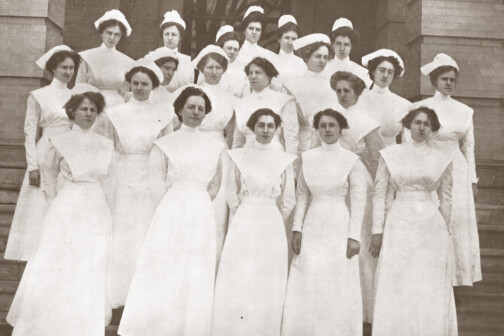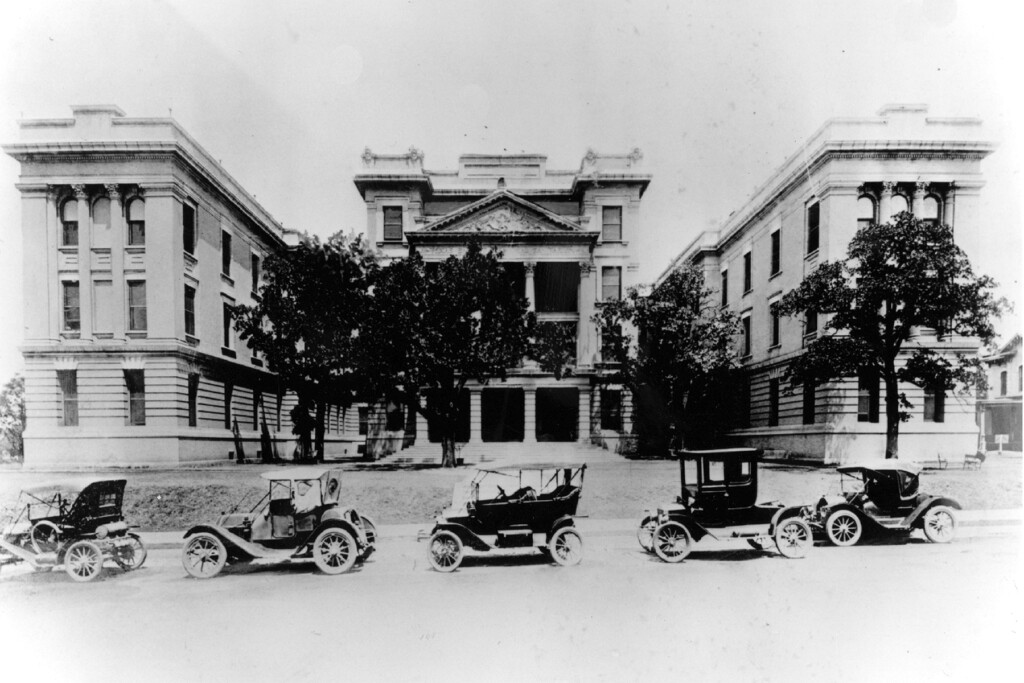In the late 19th century, Dallas’ population began to boom, and with the growth came more pollution and disease that spread through the dirt streets of Dallas. During this time, Parkland and the now-closed St. Paul hospitals opened.
Even with these new hospitals doing their best to verify skills, the practice of medicine was somewhat disorganized. An audit by the Texas Medical Association at the time found 500 fake physician licenses on file with the state. Local physician Dr. Charles Rosser led the effort to found the University of Dallas Medical Department to standardize medical education and help serve the growing region.
But when the school opened on Commerce Street downtown in 1900, finding a facility where they could learn the trade and apply their classroom learning was challenging. Parkland Hospital was open to hosting the students, but there was no streetcar service, which meant that students would have to take a long wagon ride pulled by two bay ponies. St. Paul hospital opposed hosting the students.
Rosser was not finished building up the city’s medical infrastructure and began trying to convince the citizens of Dallas to build a new facility for patients and students alike. Though he didn’t get an immediate response, he purchased a two-story, 14-room mansion in a grove of oak trees on Junius Street in East Dallas, which happened to be the home of William H. Gaston, a confederate officer and prominent land owner in East Dallas. He named the 25-bed facility the Good Samaritan Hospital in 1903.
At the time, an office visit cost a dollar, and a home visit cost $2, with 50 cents added for every mile the physician traveled beyond the Dallas city limits.
The medical school suffered financial difficulties and later a fire, and local leaders wanted to provide stability by affiliating it with Baylor University. It took some convincing, but the University of Dallas Medical College eventually became the Baylor University College of Medicine.
But the need for a larger medical facility was still present. The pastor of First Baptist Church in Dallas, George Truett, helped lead an initiative to fundraise for a new facility, raising $250,000 to build the Texas Baptist Memorial Sanitarium. Rosser’s East Dallas location was chosen for the new hospital, which broke ground in 1904. It would eventually provide 114 private rooms ad 250 beds in six large wards, costing $400,000 to build. In 1914, a three-story clinic building was constructed for minority patients, as segregated care was a fact of the day. By the 1920s, the hospital would see 20,000 and 30,000 patients annually.

In 1921, seeking unity between the medical school, the hospital, and new schools of pharmacy, dentistry, and nursing all became “Baylor-in-Dallas, and the hospital was renamed Baylor Hospital and it was renamed Baylor University Hospital in 1936.
The hospital continued to grow and expand, adding a children’s hospital in the 1920s, and the Florence Nightingale Maternity Hospital was built in 1937 adjacent to Baylor. In 1943, the Baylor University College of Medicine left Dallas for Houston after an offer from M.D. Anderson Foundation, but the hospital remained.
In 1950, another expansion led to the seven-story, 436-bed George W. Truett Memorial Hospital on the Baylor University Hospital Campus. The campus was renamed the Baylor University Medical Center.
The hospital continued to grow and add facilities, and in 1981 became a network when the Baylor Health Care System added Baylor Medical Center Ennis and Maylor Medical Center Grapevine.
The system continued to expand throughout the years, breaking barriers in heart, lung, and bone marrow transplants. The system expanded into Fort Worth by acquiring the All Saints Health System in 2003, as the hospital marked its 100th anniversary.
In 2013, Baylor Health Care System and Scott & White Healthcare combined forces, creating the state’s most extensive nonprofit healthcare system. Today, the system includes the Baylor Scott & White Health Plan, the Baylor Scott & White Research Institute, the Baylor Scott & White Quality Alliance, and one of the country’s most popular digital health platforms, MyBSWHealth. The system has 51 hospitals and 1,100 access points spanning North and Central Texas, with academic medical centers in Dallas, Fort Worth, and Temple.
The system delivered on Rosser’s prophetic prediction more than 100 years ago to build “a hospital of great importance.” Even then, he knew his actions would be “the initial step in the promotion of a great general hospital of the future.”
Author








